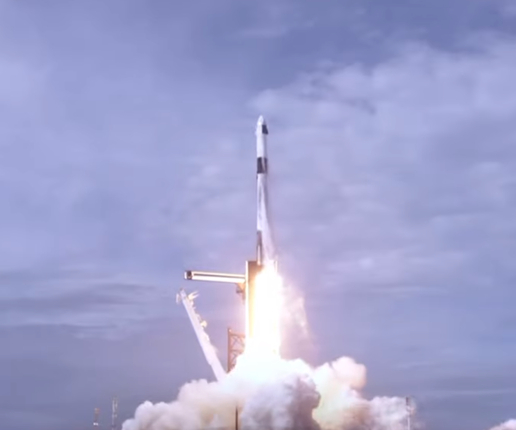NASA, SpaceX complete successful test of Crew Dragon abort system
SpaceX’s Crew Dragon completes final major flight test before it begins carrying astronauts to the International Space Station.

Source | NASA
NASA (Washington, D.C., U.S.) and SpaceX (Hawthorne, Calif., U.S.) completed a launch escape demonstration of the company’s Crew Dragon spacecraft and Falcon 9 rocket January 19. This was the final major flight test of the spacecraft before it begins carrying astronauts to the International Space Station under NASA’s Commercial Crew Program, which is working with the American aerospace industry as companies develop and operate a new generation of spacecraft and launch systems capable of carrying crews to low-Earth orbit and the International Space Station.
The launch escape test was conducted to test the spacecraft’s capability to safely separate from the rocket in the unlikely event of an inflight emergency.
“This critical flight test puts us on the cusp of returning the capability to launch astronauts in American spacecraft on American rockets from American soil,” said NASA Administrator Jim Bridenstine. “We are thrilled with the progress NASA’s Commercial Crew Program is making and look forward to the next milestone for Crew Dragon.”
As part of the test, SpaceX configured Crew Dragon to trigger a launch escape about 1.5 minutes after liftoff. All major functions were executed, including separation, engine firings, parachute deployment and landing. Crew Dragon splashed down just off the Florida coast in the Atlantic Ocean.
“As far as we can tell thus far, it’s a picture perfect mission. It went as well as one can possibly expect," said Elon Musk, Chief Engineer at SpaceX.
Teams of personnel from SpaceX and the U.S. Air Force 45th Operations Group’s Detachment-3 out of Patrick Air Force Base are workint to recover the spacecraft for return to SpaceX facilities in Florida and begin the recovery effort of the Falcon 9, which broke apart as planned.
“Today, we watched the demonstration of a system that we hope to never use, but can save lives if we ever do,” said astronaut Doug Hurley.
Prior to the flight test, teams completed launch day procedures for the first crewed flight test, from suit-up to launch pad operations. The joint teams now will begin the full data reviews that need to be completed prior to NASA astronauts flying the system during SpaceX’s Demo-2 mission.
Related Content
-
The next-generation single-aisle: Implications for the composites industry
While the world continues to wait for new single-aisle program announcements from Airbus and Boeing, it’s clear composites will play a role in their fabrication. But in what ways, and what capacity?
-
Infinite Composites: Type V tanks for space, hydrogen, automotive and more
After a decade of proving its linerless, weight-saving composite tanks with NASA and more than 30 aerospace companies, this CryoSphere pioneer is scaling for growth in commercial space and sustainable transportation on Earth.
-
Development of a composite liquid hydrogen tank for commercial aircraft
Netherlands consortium advances cryogenic composites testing, tank designs and manufacturing including AFP, hybrid winding, welding of tank components and integrated SHM and H2 sensors for demonstrators in 2025.






